An absurd privilege | JUNE 11
The family of Therese Wiedmann (née Toffler) in Vienna was secular and very well integrated. While the Tofflers were keenly aware of the situation in Germany, no one among Therese’s relatives foresaw that so many Austrians would be so quick to welcome Hitler and abandon Austrian independence. After the “Anschluss” in March 1938 she immediately lost her job with Tiller AG. Her grandfather, until recently the president of the company, was no longer permitted to enter his office. Her father, Emil, the executive manager, was kept around for the time being, in order to familiarize the new, “Aryan” management with the company’s operations. Luckily, he had transferred part of his assets to England before the “Anschluss.” In better days, the company was deemed sufficiently Austrian to be appointed a purveyor to the royal-imperial court, for which it produced army uniforms. This passport, issued to Therese Wiedmann on June 11, 1938, contains a visa that includes “all countries of the earth” and “return to the German Reich.”
Without warning | JUNE 10
Ostensibly for traffic-related reasons, the city of Munich informed the Jewish Religious Community on June 8 that it was to sell the magnificent, centrally located Main Synagogue and the lot on which it stood for a fraction of its actual value. On June 9, the demolition of the building, which for little more than 50 years had served as the spiritual and cultural center of the Jewish Community, began. According to this June 10 report by the Jewish Telegraphic Agency, Chancellor Hitler had personally ordered the removal of the “eyesore.” Rabbi Baerwald, the spiritual leader of the community, received no more than a few hours advance warning in order to salvage the community’s most sacred objects. The recently acquired organ was passed on to a newly-built Catholic church. The loss of this building that had once been a symbol of pride, permanence, and belonging, was devastating to the Jewish Community of Munich.
Stölpchensee | JUNE 9
In 1935, the Nazi party press had orchestrated a campaign to exclude Jews from public swimming pools, citing “unpleasant incidents” or warning the public of the “danger” allegedly posed by Jews. Suddenly, signs inscribed with texts like “Jews are not permitted access to this facility” were put up almost everywhere. Stölpchensee, one of the lakes just outside Berlin, was the last public bathing spot to which Berlin Jews had access. Fritz and Friedel F. were married and lived in Berlin, where Fritz owned a lamp store. In June of 1938, their weekend cottage at Stölpchensee was still a family escape from the city and harassment.
You never write, you never call… | JUNE 8
Hans Joseph Pinkus was a direct descendant of Samuel Fränkel, founder of a textile factory in Neustadt (Upper Silesia), which for a while was the primary employer in the entire region and one of the world’s foremost producers of linens. His grandfather, Max, had been a personal friend and patron of the Nobel Prize-winning author Gerhart Hauptmann. His great-uncle, the scientist Paul Ehrlich, had been a Nobel laureate, too. Lili, Hans Joseph’s stepmother, was hardly intimidated by this pedigree. In this letter, written on June 8, 1938, she gives him a major dressing down for having neglected his correspondence with his parents and sternly inquires whether he flunked his exam in the Czech language. At this point, 16 year-old “Pipo,” as the family called him, was staying with his step-grandmother in Brünn (Brno, Czechoslovakia) and attending school there. His parents and half-sisters lived in Neustadt: the directorship of the the S. Fränkel company had been handed down to male members of the Pinkus family for several generations and was now held by his father, Hans Hubert.
Unbearable despair | JUNE 7
The Anschluss, Austria’s annexation by Nazi Germany in March 1938, precipitated a wave of anti-Jewish violence. Emboldened by their new status and by the utter defenselessness of the Jewish population, Nazis and their sympathizers entered Jewish homes and seized whatever property they liked. Jewish-run businesses were ransacked or destroyed, and Jews of all ages were forced to carry out the demeaning task of scrubbing streets to remove political slogans under the eyes of jeering onlookers. With no protection to be expected from police, a feeling of utter abandonment and hopelessness drove many Jews to take their own lives. In the first two months after the Anschluss, 218 Jews escaped the state-sanctioned cruelty by taking their own lives. The JTA’s June 7 dispatch lists the most recent suicides—including that of a family of four—and deaths at the Dachau concentration camp.
Universal humanity | JUNE 6
In his “Remarks about the Feast of Weeks,” published in the June issue of the “Jewish Community Paper for the Rhenish Palatinate Region,” Rabbi Dr. Ernst Steckelmacher of Ludwigshafen poses a real challenge to his readers. He interprets the Book of Ruth, one of the readings during the Feast of Weeks, as an example of Judaism’s emphasis on the precedence of the universal over the particular. Through Ruth, who embodies universal humanity, the book shows that goodness can be found anywhere. This was not an intuitive message at a time when the ostracism of Jews from German society forced them to turn inward. June 6, 1938, was not only the second day of Shavuot, but also the 80th birthday of Claude G. Montefiore, the President of the World Union of Progressive Judaism. Dr. Steckelmacher acknowledges this occasion and reinforces his universalist message by drawing attention to the similar sentiments of Claude Montefiore.
Jewish schools | JUNE 5
For many Jewish children, going to public school turned into hell under the Nazis. Just getting there could mean running a gauntlet of anti-Jewish slights. At school, exclusion by fellow students and teachers was the rule. In order to spare their children this ordeal, parents who could afford it sent their children to Jewish schools. Before 1933, most assimilated German Jews attended public schools. However, in the hostile climate of the Nazi regime attendance at Jewish schools grew. Dr. Elieser L. Ehrmann, a pedagogue and employee of the school department of the Reich Representation of Jews in Germany had developed curricula for teachers at Jewish schools which aimed to deepen the knowledge of Jewish holidays and the customs accompanying them and thus instill a positive Jewish identity. The excerpt shown here is from Ehrmann’s “Curriculum for the Omer and Shavuot [Feast of Weeks],” published in 1938 by the Reich Representation of Jews in Germany. That year, the first day of Shavuot fell on June 5.
Lifesaver | JUNE 4
Close to 50 years before issuing an affidavit of support for his nephew, Karl Grosser, in Vienna, Frank W. Fenner had himself immigrated to the United States from Europe. A restaurant and confectionery owner in Mendon, Michigan, he pledged to support his young relative until the 26-year-old became financially independent. Finding a sponsor was a key prerequisite for obtaining an immigration visa that was often hard to fulfill. The visa process began by registering with the nearest US consulate, at which point a number on the waiting list was assigned. The length of the list depended on the number of Jews from a given country allowed to enter the US according to the quota system that had been in place since 1924. Despite the severe refugee crisis, quotas were not raised in 1938. During the waiting period, applicants had to procure all the required documents as well as certified copies. Prospective immigrants were lucky if their documents were still valid when their numbers came up.
Left in the dark | JUNE 3
Nobody saw fit to inform the worried wives of thousands of Jewish men arrested by the Nazis about their spouses’ whereabouts and the expected period of imprisonment. Many of them decided to go to the Rossauer Lände detention facility and the central police station in order to get information on the whereabouts of their loved ones. According to this June 3 report from the Jewish Telegraphic Agency, the detainees had been taken away in overcrowded railroad cars, many of them forced to remain in uncomfortable positions for up to five hours before departure. While there were intimations that those sent to the Dachau concentration camp in Germany would be exploited as construction workers in order to enlarge the camp and subsequently be released, many had no idea where their husbands were. The author of the report sees the “extraordinary callousness with which police have withheld information” as “one of the most terrifying aspects of the situation.”
Gestapo in the house | JUNE 1
Her paintings were political accusations and constituted a threat to the Nazi regime. Lea Grundig, born in 1903 as Lina Langer, was arrested with her husband, Hans, by the Dresden Gestapo on June 1, 1938, and not for the first time. The explanation given on the form was “Suspicion of subversive activity.” What was meant was her art. With picture cycles like “Under the Swastika” or “It’s the Jew’s Fault,” Grundig, who since 1933 had been barred from her profession, hauntingly documented the brutality of the persecution of Jews and communists by the Nazis. In 1935, she gave one of her paintings the portentous title, “The Gestapo in the house.”
The Jewish Hospital in Hamburg | MAY 29
Depicted here is the facade of the Jewish Hospital in Hamburg. The photograph is part of an album preceded by the above inscription dated May 29, 1938. The hospital was endowed by merchant and banker Salomon Heine, also known as the “Rothschild of Hamburg,” in memory of his late wife Betty and inaugurated in 1843. The poet Heinrich Heine, Salomon’s nephew and beneficiary, honored the occasion with his poem Das neue israelitische Hospital zu Hamburg, in which he called it “A hospital for poor, sick Jews, for human beings who are thrice miserable, afflicted with three vicious ailments, with poverty, bodily pain, and Jewishness!” Even though the Nazi regime had been undermining the hospital’s finances since 1933, it had withstood these measures and was still able to take care of its patients in May 1938.
Brit Shalom | MAY 28
In 1933, the distinguished philosopher of religion Martin Buber decided to relinquish his honorary professorship at Goethe University in Frankfurt/Main in protest against the Nazi rise to power. Consequently, the regime forbade him to give public lectures. In the years to follow, Buber founded the Central Office for Jewish Adult Education and countered the Nazis’ efforts to marginalize and destroy German Jewry by strengthening Jewish identity through education. It was not until May 1938 that he followed a call to the Hebrew University to assume the new chair for Social Philosophy and moved to Jerusalem with his wife Paula, a writer. The couple settled down in the Talbiyeh neighborhood in the Western part of the city, which at the time was inhabited by both Jews and Arabs. It borders on Rehavia, then a major stronghold of immigrants from Germany. Buber was among those envisioning peaceful coexistence in a bi-national state.
Henry Kissinger turns 15 | MAY 27
On May 27, 15 year-old Heinz Alfred (later Henry) Kissinger celebrated his birthday in his native Fürth one last time. Heinz had attended the Jewish elementary school and a Gymnasium in his home town. From 1933, Jewish children were no longer allowed to attend public schools, so that only the Israelitische Realschule was open to him and his younger brother, Walter. Elsewhere, too, the new times made themselves felt in the children’s lives. Suddenly, they were no longer allowed to join the other kids and swim in the river Altmühl when they were visiting with their grandparents in Leutershausen. Heinz was an avid fan of the local soccer team and a player himself, but under the Nazis, Jews were prohibited from attending their games. Even though his father, Louis, had been put on permanent furlough from his job as a teacher at a girls school when the Law for the Restoration of the Professional Civil Service came into effect in 1933, he was inclined to stick it out in Germany. It was thanks to his resolute mother, Paula (née Stern), that in April 1938, Louis Kissinger applied for passports. By May, the family’s preparations for emigration were in full gear. Relatives of hers had emigrated to the US already before 1933 and were now helping with the bureaucratic groundwork.
Paperwork | MAY 26
Since 1937, Lina and Siegmund Günzburger of Lörrach in southwest Germany and their son, Herbert, had been preparing their paperwork for emigration. The requirements amounted to nothing short of a nightmare. Prospective emigrants had to procure numerous personal documents, letters of recommendation, and affidavits. They were also required to prepare an inventory of all their belongings and to document that they had paid all their taxes. Apparently, the required documents also included this copy of the marriage certificate for Siegmund’s grandparents. Especially perfidious was the so-called “Reich Flight Tax.” Originally introduced in the waning days of the Weimar Republic to prevent capital flight in reaction to the government’s austerity policy, under the Nazis, it became a tool to cynically punish the Jews for leaving a country that was doing everything it could to make it unbearable for them to stay.
More conflict in Palestine | MAY 25
Time and again, unsettling news about sectarian violence in Palestine reached Jewish readers in the diaspora. On May 25, the Jewish Telegraphic Agency, a prime source of information on the situation of the Jews under the Nazis and of developments in the Yishuv, reports under the headline “6 Deaths Added to Terror Toll in Palestine.” It writes about the latest victims in Jerusalem, Haifa and Tiberias—both Jews and Arabs—and the circumstances of their deaths.
Soldier, pacifist, cabaret artist | MAY 24
After three decades of making his fellow Austrians laugh, cabaret artist Fritz Grünbaum’s career was brought to an abrupt end by the Anschluss. His politics alone would have sufficed to make him intolerable for the new regime: Grünbaum had returned from action in World War I not only a decorated soldier but also an avowed pacifist. As for Nazism, he did not mince words. Since 1933, he had been getting more political, and when during a 1938 performance a power outage caused the stage lights to go out, he commented glibly, “I see nothing, absolutely nothing. I must have accidentally gotten myself into National Socialist culture.” His last performance at the famous cabaret “Simpl” in Vienna just two days before the Anschluss was followed by an artistic ban on Jews. Grünbaum and his wife Lilly, a niece of Theodor Herzl, tried to flee to Czechoslovakia but were turned back at the border. On May 24, he was interned at the Dachau concentration camp. Grünbaum was also known as a serious art collector, mostly of modernist Austrian works, and a librettist.
Faster and faster | MAY 23
In April 1938, Rabbi Leo Baeck, the president of the Reich Representation of Jews in Germany and as such the main representative of German Jewry, had presciently written, “And this year will be a difficult year; the wheel is turning faster and faster. It will really test our nerves and our capacity for careful thought.” Baeck had been an army chaplain in World War I and as a patriot must have been extremely pained by the persecution of German Jewry. With large parts of the community reduced to poverty, Jewish rights curtailed, Jews pushed to the margins of society, and no prospects for improvement, Rabbi Baeck’s 65th birthday on May 23 probably was quite a somber affair.
Ready for Germany | MAY 22
The writer of this letter was a young man from Hildesheim, Fritz Schürmann (later Frank Shurman), born in 1915. Even though he is said to have struggled with antisemitism well before the Nazis rose to power, he joined the Deutscher Vortrupp (“German Vanguard”) in 1934, a group of young, extremely nationalistic Jews whose slogan was “Ready for Germany” and who hailed National Socialism as a force preventing Germany’s downfall. Given these views, it must have been especially painful for him to confront the bitter reality of rejection by German society. In this letter, he thanks a Mr. Dilthey in Berlin for the distinction of having spent time with him and dramatically informs him of his Jewish identity. “I am a Jew! A Jew in a desperate position: a Jewish German who in spite of everything that has befallen him or perhaps because of it cannot shed his ties to Germany […].” Denied his identity as a German by the Nazi regime, the writer communicates the crippling effects of the political situation on his psyche and the absurd notion of having to leave Germany in order to be able to be German.
A silly ditty | MAY 21
It is hard to imagine that the guiding hand of an adult was not involved in writing the toast that Heinz Neumann made at his bar mitzvah celebration on May 21 in Berlin: the way in which the boy expresses his gratitude for having been granted a carefree life by his parents despite the difficult times scarcely comes across as the style of a 13 year-old. Heinz promises to “keep in mind the ethical commandments of Judaism” and wishes everyone health, contentment and happier times. Luckily, in order to brighten things up a bit, one of his grandmothers and an aunt had composed a song with light-hearted lyrics based on the melody of a familiar German oompah tune in honor of the bar mitzvah. It can be assumed that the festive meal, crowned by a “Fürst Pückler Icecream Cake,” also raised the celebrants’ spirits.
Pitiless | MAY 20
In today’s release, the Jewish Telegraphic Agency reports that the Deutsches Volksblatt in Vienna urges a “pitiless anti-Jewish boycott.” This, the paper argues, is the line demanded by Hermann Göring in his last speech in Vienna. Highly decorated in WWI as a fighter pilot, Göring had become a member of the NSDAP early on and was a member of its inner circle. He had established the Gestapo in 1933, was commander-in-chief of the German airforce (Luftwaffe) and as Plenipotentiary of the Four-Year Plan, he also wielded power over the German economy. Other than that, he is known for his pivotal role in bringing about the Anschluss and his passion for collecting art, which he often acquired in dubious ways.
Brothers | MAY 12
Unlike his older brother Hermann, the holder of several senior positions in the NS government and a notoriously brutal hater of Jews and dissidents, the engineer Albert Göring abhorred Nazism and was prepared to act on his convictions. He refused to join the party and demonstratively adopted Austrian citizenship. A resident of Vienna, he is said to have joined Jews, who after the Anschluss were forced to perform the humiliating task of scrubbing the pavement, and he did not hesitate to help victims and political opponents of the regime. In this letter to the Jewish lawyer, Dr. Hugo Wolf, he communicates his impression that “a significant calming” had taken place and his assumption that the danger was past. He also promises help in case of need.
Right of residence | MAY 2
Austrian municipalities were required by law to issue documents known as a Heimatschein to their inhabitants confirming their right of residence. These papers guaranteed their holders the right to live in a given area and were necessary to access social welfare support in case of need. In May 1938, the 1849 law establishing this system was still in force—at least on paper. The Heimatschein of Carl Grosser, a young Jewish businessman, was renewed on May 2, 1938. Grosser had graduated from the prestigious Wasagymnasium, with its strikingly high percentage of Jewish students (up to 70%), in his native Vienna in 1932. Afterward, he joined his father’s necktie business, spent time in Germany and England to expand his professional horizons, and traveled extensively throughout Europe.
The best revenge | APRIL 29
A month and a half after the “Anschluss,” Paul Steiner is still incredulous. Everything seems so unbelievable, he writes in his diary, that “even ones own words are becoming astonishing and dubious.” He wonders what the outside world is doing for the Jews in light of German barbarity, especially for the Burgenland Jews, who were brutally expelled right after the “Anschluss” and ended up stranded in totally inadequate shelters while their belongings were appropriated by their former neighbors. Steiner also imagines the “revenge” that Jews will exact, shaming the world with their achievements once they are given the right to self-determination.
Liesl | APRIL 28
During the years of the authoritarian regime installed in Austria in 1934 (“Austrofascism”), the police prison at Rossauer Lände in Vienna (nicknamed “Liesl” by the locals) had already been used as a lockup not only for criminals but also for political dissidents. After the annexation of Austria by Nazi Germany on March 12, 1938 (“Anschluss”), the first 150 Austrians were taken to the Dachau concentration camp from this notorious prison. Some, like Edmund Wachs, were held there in “protective custody,” a convenient tool used by the nazis to rid themselves of Jews and political opponents, since it could be imposed arbitrarily and left the prisoners little or no recourse to legal support. In this postcard, Edmund’s brother, the attorney Dr. Karl Wachs, reassures Edmund that he is doing everything he can to press his case and asks him for patience.
Furniture for emigrants | APRIL 27
Three prominently placed ads on the front page of the “Jüdisches Gemeindeblatt für Baden” make amply clear what is on people’s minds in April 1938: emigration looms large. Three businesses in Karlsruhe are offering related goods and services, such as passage to South America, Africa, and Asia, furniture for emigrants, and home sales. In the April 27 issue, the topic comes up from various perspectives: the shrinkage of congregations as a result of members going abroad, English classes for prospective emigrants, the departure of esteemed leaders, practical advice on how to get support from Jewish aid organizations during the emigration process, and more. Other parts of life seem to be taking their normal course. Lehrhaus activities, student concerts, Kulturbund events, personal ads and other topics counter-balance the abnormality of the situation.
Starting over at 40 | APRIL 26
Marseille was one of the most important ports of departure for the refugees on their way overseas. It was here that Moses Wainstein obtained the papers he still needed for his emigration to Uruguay. This certificate of vaccination was written in Spanish for submission to the authorities there. The former Berliner had already had his belongings shipped to Marseille by a German company. Wainstein was 40 years of age at this point.
Race, not religion | APRIL 25
In gloomy times like these, a letter promising a work opportunity in Canada constituted a much needed ray of hope. Although in possession of what Heinrich Heine famously referred to as “the admission ticket to European culture”—a certificate of baptism—Anton Felix Perl was dismissed on “racial” grounds from his position as a resident at the General Hospital in Vienna in 1938. Luckily for Dr. Perl, he had the support of a prominent advocate, the Archbishop of Winnipeg, who gave him valuable advice regarding emigration to Canada as well as promising practical help in this letter dated April 25, 1938.
Our name should perish with us | APRIL 24
The diary of Dr. Hertha Nathorff (née Einstein) paints a vivid and at times nightmarish picture of the Jewish physician’s experiences in Nazi Germany. On April 24, she describes a visit with her parents in her native Laupheim in Swabia. Many Jewish shops had been sold, and their owners had emigrated. The Nazis’ efforts to malign and isolate the Jews had been so successful that passers-by were afraid to greet her. Her father had informed her that he was not going to sell the company which had been in the family’s possession for four generations and that he would prefer that it perish along with their name. The degree of isolation experienced by German Jews at the time is also evident in another episode mentioned in the diary: Dr. Nathorff is amazed at the fact that her former professor had the courage to send her regards through a patient.
The Prater amusement park | APRIL 23
This advertising brochure shows the Prater, a large public garden and popular amusement park in Vienna’s central 2nd district, in the 1930s. Here, on Saturday, April 23, hundreds of Viennese Jews were rounded up and subjected to beatings and maltreatment in front of jeering onlookers. Some were forced to eat grass. Jews of both sexes, regardless of age and health, were made to run in circles until they collapsed. Many of those thus humiliated suffered heart attacks, some died.
Brain drain | APRIL 22
Jenny Brinitzer was born in Riga, Latvia in 1884. After studies in Berne, Berlin and Kiel, she managed to establish herself as the first female physician in Hamburg Altona. There, the mother of three worked for 20 years in a joint practice with her husband, the dermatologist Dr. Eugen Brinitzer. In 1933, Jews constituted about one fourth of Hamburg’s physicians. Jewish physicians who worked directly for health insurance funds or for the public health service had been dismissed within the first two years of the Nazi regime. Starting in 1935, the Nazis began circulating a list of 150 Jewish doctors in Hamburg as part of their campaign to separate Jewish doctors from their “Aryan” patients. In April 1938, Dr. Jenny Brinitzer and her husband left Germany and emigrated to Bangalore, India.
A Jewish cinema institute? | APRIL 21
According to a Jewish Telegraphic Agency report, on April 21, the Propaganda Ministry of Nazi Germany authorized the creation of a Jewish Cinema Institute. The name was misleading. It was not intended to serve the cultural enrichment of the Jewish community. The main purpose of the Institute was supposed to be the production of movies showing life in Palestine and urging German Jews to emigrate. In other words, the plan was just another part of the Nazi scheme to rid Germany of its Jews. At the same time, Der Stürmer, one of the most viciously antisemitic newspapers in Nazi Germany, declared that Jews should not be allowed inside cinemas and theaters.

